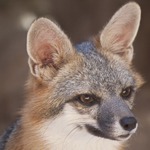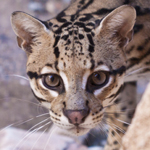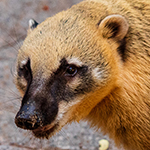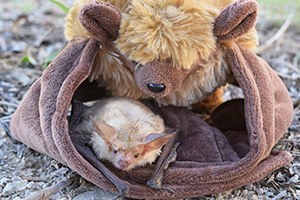Cat Canyon
At Cat Canyon you can view small mammals in naturalistic grotto settings. Cat Canyon is home to a variety of animals which can be viewed from overhead and at eye level.
Currently on exhibit in Cat Canyon:
- Coati
- Grey Fox
- Ocelot



Coati
Coatis are intelligent and social creatures of the raccoon family. Unlike raccoons and ringtails, coatis have a longer nose marked by white and are active by day instead of nocturnal.
- Coatis use their long, curved claws to dig up roots, insects, lizards, seeds, and small mammals.
- Their long noses help them find food under soil or fallen leaves — they can smell items as deep as two feet underground!
- Coatis will also climb trees to look for fruit, nuts, and birds’ eggs. Their long tails provide balance as they climb.
- Coatis live together in big groups called bands, led by an older female. Adult males—often referred to as coatimundis—are solitary most of the year but will join the bands during breeding season.
- Coatis communicate with each other using a variety of sounds and gestures like alarm grunts, chitters, squeals, calls, and squeaks, as well as facial expressions, tail postures, and social physical contact like neck biting and grooming.
Ocelot
The ocelot reaches the northern limits of its range in Arizona and Texas and so was probably never abundant in the United States. It is presently listed as Endangered.
Ocelots (Felis pardalis) have been documented in Arizona, though loss of habitat may limit them. Ocelots prefer dense thornscrub, live oak scrub, or riparian areas with an overstory cover. In Texas, a population of 50 to 100 ocelots has been holding steady for several years, but a population that small may not have enough genetic diversity to survive indefinitely.
Arizona Game & Fish Department biologists investigate and keep track of sightings of these rare cats, but caution that frequently juvenile mountain lions (with spots) and bobcats are confused with jaguars or ocelots, especially in poor light. Still, knowing that there could be a rare cat behind the next shrub or boulder makes the wilderness a much more exciting place!










